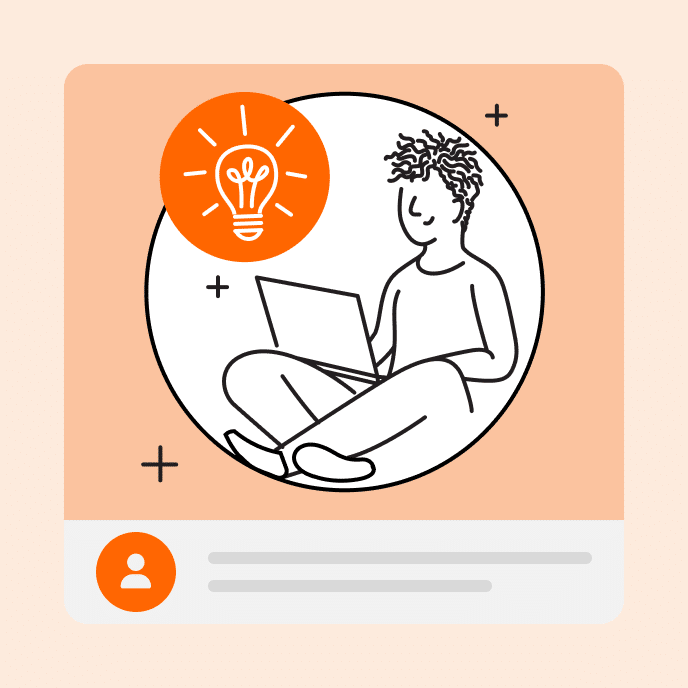8 E-Learning Platform Security Best Practices: How to Protect Learner Data
Keep sensitive employee or learner data safe. Learn eight must-have security features when choosing a trustworthy e-learning authoring platform.

How do you safeguard employee data on online training platforms?
Whether you’re delivering compliance training, onboarding new hires, or upskilling employees, keeping learner data secure is a must. A secure e-learning platform not only protects sensitive company or employee information but also ensures an uninterrupted learning experience.
So, how might you start evaluating the security of online training tools? Here’s a shortlist of eight security and privacy features to look for when choosing an e-learning authoring platform.
Key Takeaways
- E-learning platforms may collect and store personal and usage data, such as names, email addresses, engagement metrics, and more.
- Choosing a platform with robust security measures helps prevent data breaches, unauthorized access, compliance violations, and other security incidents.
- Look for online learning platforms that feature compliance certifications, end-to-end encryption, access and authentication controls, data residency and hosting transparency, secure API and integration controls, automatic backups, and user privacy controls.
How do e-learning platforms use sensitive data or personal information?
While specific data usage varies by platform, many course authoring tools require user information to set up accounts, personalize learning experiences, track progress, and improve products or services. For example:
- Personal information. Your name, company, job title, and email address are often collected during account registration, subscription purchases, and customer support interactions.
- Usage data. Data related to your use of websites and services is often captured to personalize the user experience and improve apps or services. Examples of usage data include your IP address, internet service provider (ISP), access times, browser type and language, visited web pages, navigation behavior, and referral sources.
- Platform activity metrics. These metrics capture data on feature usage, session frequency, and error reports to enhance platform functionality and troubleshoot issues.
What makes an e-learning platform secure? 8 critical security and privacy features
Choosing the right e-learning platform is about more than just features—it’s about trust. Look for these eight security features to help protect learner data and work towards compliance with data privacy laws and regulations.
1. Compliance with security regulations and data protection laws
A trustworthy e-learning platform complies with global data protection regulations to ensure legal and ethical data handling. Look for platforms that meet relevant and reputable certifications. This may include:
- GDPR (Europe)
- CCPA (California)
- SOC 2 Type II, ISO 27001 (international standard for information security)
- ISO 27701 (international standard for data privacy)
- ISO 42001 (international standard for managing Artificial Intelligence systems)
- HIPAA (if dealing with health-related training data)
- FERPA (if handling student data)
Compliance ensures that user data is collected, stored, and processed securely while providing transparency about data usage. A compliant SaaS provider also conducts regular security audits—including penetration testing to monitor security infrastructure, identify vulnerabilities, and address emerging threats.
2. Data encryption at rest and in transit
Strong end-to-end encryption protects sensitive information from unauthorized access. Look for platforms that use AES-256 encryption for data at rest (when stored on servers) and TLS 1.2 or 1.3 encryption for data in transit (as it moves across networks). This prevents hackers from intercepting data during transmission or extracting it from storage systems—safeguarding login credentials, records, and learning materials from breaches.
3. Role-based access control and least privilege access
Administrators, instructors, and learners should have different levels of access. Role-based access control (RBAC) restricts permissions, ensuring that only authorized users can view or modify specific data and functions within the platform. Implementing the least privilege principle—aka granting the minimum necessary access—further reduces the risk of data exposure and insider threats. This is particularly important when handling confidential employee training data or sensitive corporate knowledge.
4. Single sign-on (SSO) and multi-factor authentication (MFA)
Single sign-on (SSO) and multi-factor authentication (MFA) protect against credential theft. SSO enables users to log in using their existing enterprise credentials—such as Google, Microsoft, or Okta—reducing the security risk of lost or weak passwords. MFA adds an extra layer of security by requiring a second verification step—such as a one-time code via email, SMS, or an authentication app.
5. Data residency and hosting transparency
Some regulations, like GDPR, require data to be hosted within specific geographic regions—so you’ll want to confirm where the online learning platform stores and processes data. A good SaaS provider should disclose where its data centers are located and allow companies to choose a region for data storage. Additionally, check if the provider uses third-party cloud services (e.g., AWS, Azure, Google Cloud) and ensure they have strong security practices.
6. Secure API and integration controls
Many e-learning platform integrate with LMS, HR, CRM, or other third-party applications. While these integrations can enhance platform capabilities, they also introduce potential security risks. Ensure the platform offers secure APIs with authentication tokens, encryption, rate limiting, and IP whitelisting to prevent unauthorized access.
7. Data backup and disaster recovery
Data loss or downtime can occur in the case of cyberattacks, accidental deletion, or system failures. To protect against these threats, look for an e-learning platform that features automatic, encrypted backups with a well-defined disaster recovery plan (RPO/RTO metrics). A strong backup and disaster recovery strategy ensures that learning materials, student progress, and other critical data can be restored in the event of a large-scale disaster.
8. Privacy controls and user data rights
Good online training platforms provide users with transparency and control over how their personal data is collected and used. This should include:
- Data portability: Users can download and transfer their data to another platform.
- Right to be forgotten: Users can request the deletion of their personal data.
- Opt-out of tracking analytics: Users should have the ability to opt out of non-essential analytics and data collection.
Choose a secure course authoring platform
Cyber threats aren’t going away, but with the right e-learning platform and security measures in place, you can better safeguard learners’ data, foster a secure learning environment, and deliver seamless online training programs.
Want to learn more about best-in-class data privacy and security measures? Keep up with Articulate’s commitment to security by visiting our Trust Center.
You may also like

What We Learned at Articuland 2025
What we learned from our sold-out Articuland user conference—from community value to evolving industry standards.

